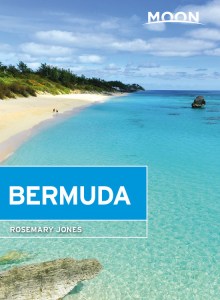The Bermuda Cedar
The Bermuda cedar (Juniperus bermudiana) is a symbol of survival for islanders, who have depended on the sturdy evergreen from the first days of human habitation on Bermuda. The endemic cedar, along with the palmetto and olivewood, covered the island in thick woods during the 1500s and early 1600s, and later sustained generations of English colonists. They used its timber for constructing homes, churches, and forts after colonization in 1612. They chose cedar for building light, rot-resistant Bermuda sloops—vessels that fueled a whole maritime industry for over a century in the 1700s. The cedar tree’s aromatic, red-hued wood was much sought-after for crafting cabinetry and fine furniture, including chests, tables, and four-poster beds, much of which graces modern Bermudian homes. Early Bermudians even produced liquor by fermenting the cedar’s blue-gray berries and had medicinal uses for its dark-green foliage and hairy bark.
With salt-tolerant foliage and long roots anchored in the island’s limestone-rich soil against hurricanes, cedars were so abundant that islanders squandered the wood, burning cedar forests in vain attempts to rid the island of rats. Colonists also shipped it carelessly overseas in the form of expendable crates to hold exports. Bermuda cedar was soon in such short supply that it became immensely valuable. Indeed, by the 18th century, island properties were valued by the number of cedars growing on them. Protection laws enacted over the years bear testimony to the iconic worth of the beloved cedar in the eyes of local residents.
But Bermuda’s landscape changed drastically in the 1940s, when an environmental tragedy nearly wiped out the cedar. An invasion by two scale insects, the oystershell scale and the cedar scale, spread a virulent form of cedar blight that eradicated 90 percent of the island’s cedar trees within a mere decade. As the infestation continued, Bermudian officials tried to curb the pests with introduced species such as the ladybug, but efforts were ineffective and too late. Silvery hillsides of skeleton trunks—some of which remain—underscored the enormity of the outbreak; by the time authorities had a handle on the problem, just 1 percent of the original forest remained.
It has taken the species decades to recover, but the cedar is slowly making a comeback, thanks to strong reforesting efforts by the island’s Department of Parks and conservation services, using insect-resistant trees. Every September, Bermudian schoolchildren are encouraged to gather the tree’s bluish-green berries to grow cedar saplings for dispersal around the island. The government is also pushing ahead with a long-range program to replace invasive species with cedars and palmettos in national parks—an effort to reclaim the look of Bermuda’s first forests.
Cedars still hold a special place in Bermudian hearts. Planting a cedar tree on your property remains a popular wedding tradition, symbolizing the growth of the bride and groom’s relationship. Bermuda cedarwood is coveted in the construction industry for doors, window frames, and beams—though it is now so hard to get, and therefore so expensive ($42 a board foot), that many homeowners opt for Virginian cedar instead. (Indeed, cedar trees are in such demand, they have been illegally cut down and stolen from nature reserves.)
Visitors can find carved cedar trinkets for sale around the island, either in stores or from outdoor vendors (at Dockyard, for example). But the best examples of Bermuda cedar are found at auction. Check the daily paper; if your visit happens to coincide with one of the annual major auctions of contents from grand island homes, exquisite cedar heirloom chests or coffee tables will no doubt be among the offerings. Be prepared to put your pocketbook up against those of local aficionados, however; genuine Bermuda cedar treasures may appear the epitome of rustic beauty, but they cost the crown jewels.
